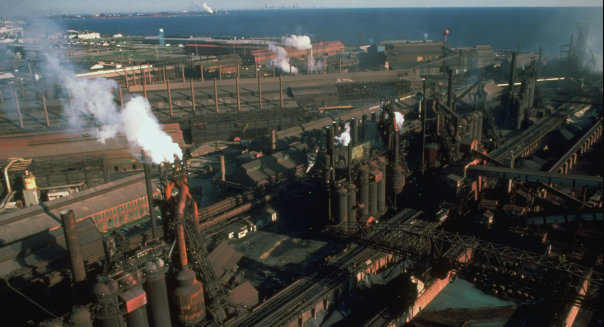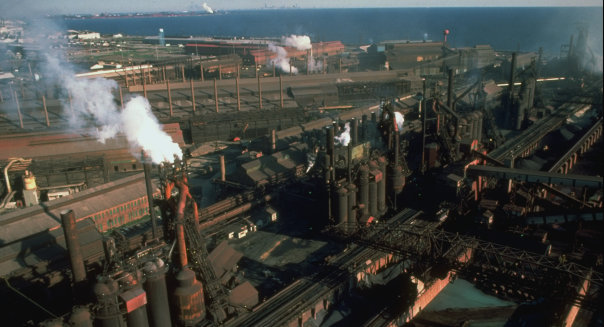
The bigger they are, the harder they fall.
That can be true in sports and in corporate America.
At one time, U.S. Steel (X) was the largest company in the world, but as of Tuesday, it’s no longer big enough to be included in the S&P 500 (^GPSC), the index that includes 500 of the largest public companies in the United States.
Back in the day, U.S. Steel was a corporate superstar. Like LeBron, Beyoncé and other stars of today, it only needed one name — it was often referred to simply as Steel. It was the world’s first billion dollar company, and at its peak in the late 1950s, the company had an inflation-adjusted market value of $39.7 billion. Now, though, the company is valued at less than $4 billion.
That means it’s worth less than such corporate “luminaries” as International Game Technology (IGT), United Therapeutics (UTHR) and Lululemon Athletica (LULU), the struggling maker of yoga pants. And also, worth less than the minimum market cap for the S&P 500.
America’s Industrial Might
U.S. Steel was founded in 1901 by the legendary financier and industrialist Andrew Carnegie and several partners. Throughout much of the first half of the 20th century, the company was synonymous with the industrial growth and power of the nation. In 1943, the company employed more than 340,000 workers. Now it employs less than one-tenth of that number.
Over the years, it has had a stormy relationship with its workers, including some long, contentious and sometimes-violent strikes. It also butted heads with government regulators, who at one time tried and failed to break up the company on antitrust grounds.
For many years, it was the major employer in its headquarters city of Pittsburgh. The city’s National Football League team took its nickname from the company, and the logo that the Steelers use on helmets was derived from the company’s original logo.
U.S. Steel is still based in Pittsburgh, but its largest domestic steel plant is now in Gary, Indiana. It also has facilities in Alabama, Illinois, Maryland, Michigan and Minnesota. It was part of the Dow Jones Industrial Average from 1901 to 1991, before getting the boot from that index.
Cheaper Imports and Five Years of Losses
Its business has been hurt by a number of factors, including cheaper steel products from overseas. It now accounts for just 8 percent of the steel used in the U.S. and it’s been buried under red ink, with five straight years of annual losses.
On Wall Street, U.S. Steel’s stock has enjoyed a bit of a rebound of late, up 48 percent from a year ago. But a longer-term look shows that it’s lost 27 percent of its value over the past five years — running in the wrong direction during one of the strongest bull markets in history. Most analysts who cover the company have a “neutral” rating on the stock.
As of Wednesday, it will be replaced in the S&P 500 by Martin Marietta Materials (MLM).
It’s time to hit the thrift stores, consignment shops and furniture outlets. Now that most people have done their spring cleaning and renovating, their used furniture is on the market. That means a hefty supply, plus low prices since stores only have so much space. You can also find discounted new furniture in July, because the next year’s models arrive in stores in early August. Don’t be afraid to try to negotiate on prices. It often works.
1. Furniture
Electronics — computers and tablets specifically — see decreases in price starting in early July. These prices continue to drop as the school year gets closer, and best way to stay on top of the hottest deals is to sign up for e-newsletters from retailers. Remember to take advantage of company and educational discounts that may be available to you, and to negotiate for free or discounted accessories.
2. Computers and tablets
Bottled water goes on sale throughout July as a lure to get you into stores. it also gets purchased more frequently throughout the summer — the natural result of barbecue and picnic season, when people entertain and spend more time outdoors. So if you drink bottled water year-round, stock up now.
3. Bottled water
If you can manage, hold off purchasing your new grill until after the Fourth of July, when mark-downs approach 50 percent off. This applies to grilling accessories, too, including grill baskets and utensils. Also, check consignment shops and thrift stores. Many people buy new grills for the Fourth of July and donate or sell their old ones.
4. Grills
Speaking of grilling, among the hottest buys during July are condiments for burgers and hot dogs: mustard, ketchup, relish, sour cream, sauerkraut, mayonnaise and pickles, etc. Buy in bulk, and pair in-store specials with coupons for super-low prices on these summer must-haves.
5. Condiments
If you’re in the market for a sweet new pair of jeans, July is the best time to buy them. Few people buy jeans during one of the hottest months of the year, so retailers put them on sale to move them. Stores also get new jeans in the late summer in anticipation of fall shopping season, so they’re eager to sell old ones to make room for new duds.
6. Jeans
Formal suits are also seldom purchased during the middle of summer. Consequently, many suit retailers will hold sales to keep business moving. If you have an upcoming formal wedding to attend — or if you simply need new suits for work and special occasions — July is the best time to buy.
7. Suits
The Secret Behind How I’m Saving 40% of My Pay
3 Costly Mistakes You Are Making About Life Insurance
15 Products You Can Almost Always Get for Free
More from DailyFinance
•How to Get the Most From Your Airline Miles
•Parental dilemma: Save for kids’ college fund or retirement?
•Weddings Cost a Small Fortune – for the Guests, Too


Leave a Reply